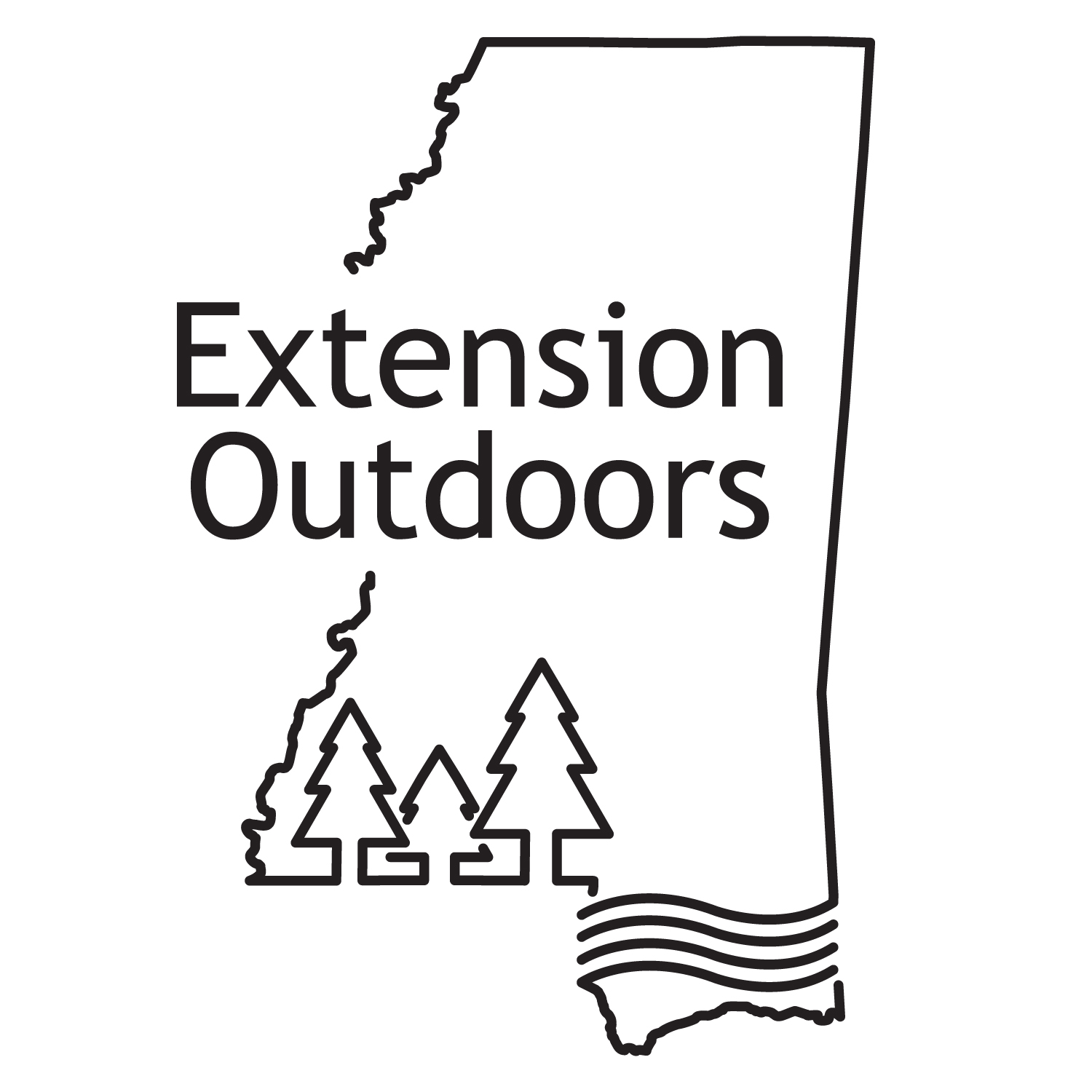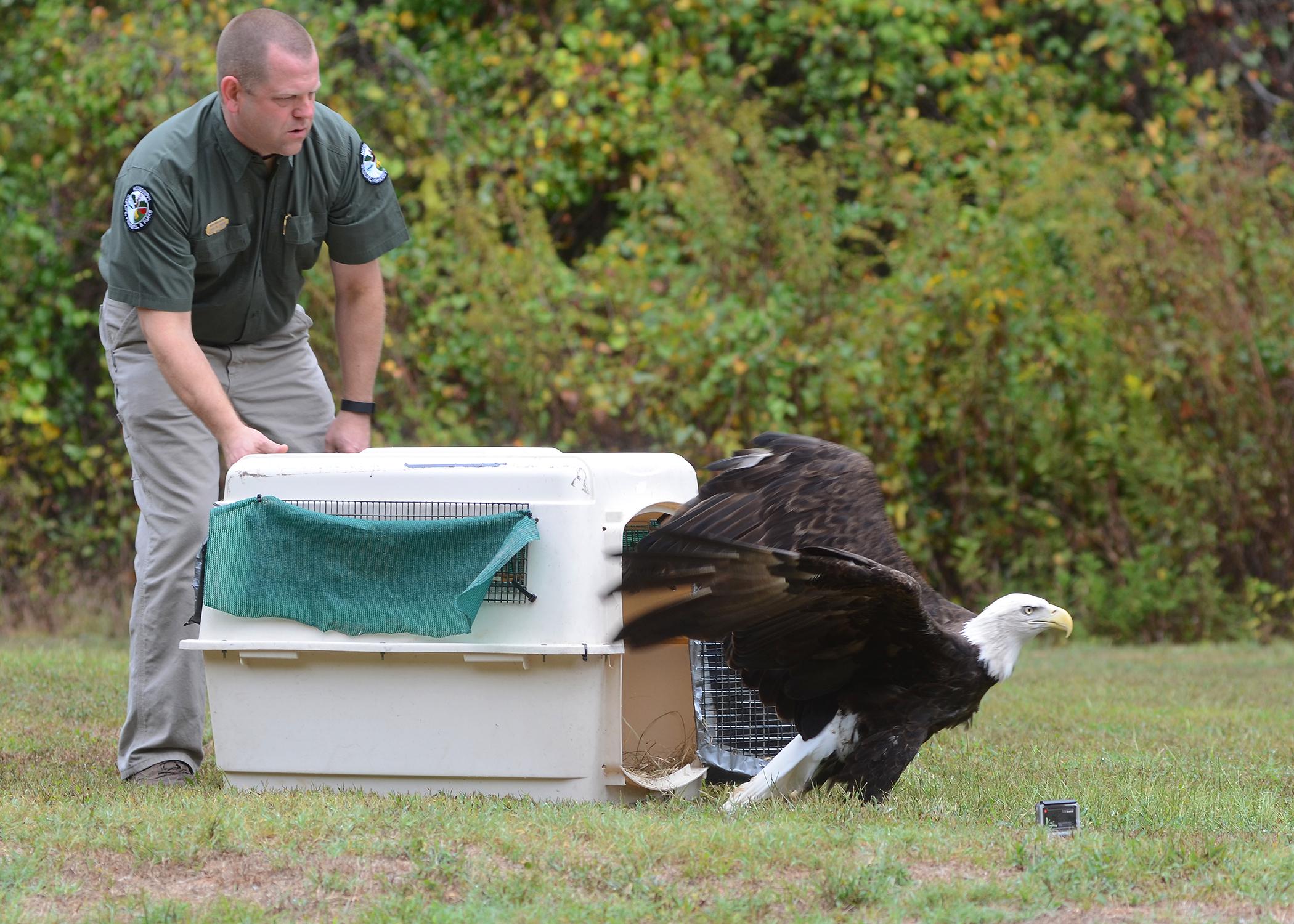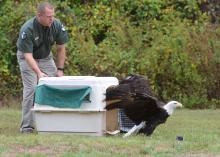Information Possibly Outdated
The information presented on this page was originally released on December 4, 2015. It may not be outdated, but please search our site for more current information. If you plan to quote or reference this information in a publication, please check with the Extension specialist or author before proceeding.
Use caution with sick or injured wildlife
STARKVILLE, Miss. -- Wild animals are amazing for many reasons. Whether it’s flying high in the sky, singing beautiful songs or simply displaying the amazing colors and patterns of their feathers or fur, wild creatures attract people. So, when we come upon an injured or sick animal, in most cases, we want to help it any way possible.
Helping wildlife is a noble act of kindness and often an experience you will carry for the rest of your life. In fact, many wildlife biologists, myself included, can give credit to these types of experiences during our formative years as to why we became biologists.
That said, it is important to make sure your kind intent to help a wild animal does not do more harm than good for the animal and yourself. Considering the following steps the next time you encounter an injured or sick wild animal can help you help wildlife.
Make sure the wild animal is actually injured or sick.
Simply finding a young or adult animal bedded down in your yard or in the woods does not mean the animal is injured. Look for key signs such as broken limbs, lacerations, and erratic or abnormal behavior. If the animal is not showing any of these signs, let it be.
Reach out to wildlife professionals.
If you have determined the animal is sick or injured, the best option is to contact local wildlife professionals and avoid direct interaction with the creature. Step one should be to contact the Mississippi Department of Wildlife, Fisheries and Parks at 601-432-2400 to ask about legal issues surrounding injured wildlife and to request the official list of Certified Wildlife Rehabilitators throughout the state.
You can also reach out to your Mississippi State University Extension Service county office for additional information about the species of concern. Contact information is online at Extension.msstate.edu. Before calling for assistance, understand that in some situations involving injured wildlife, the animal cannot be saved or helped.
Survey the scene before interacting.
Ensure your own safety and the safety of others before interacting with an injured wild animal. Sometimes no action is the best action for all involved. Injured or sick wildlife will still defend themselves or flee when approached. It is very easy for the human helper to get kicked, bitten, scratched or wounded in some other way when working with a wild animal. Fleeing animals can be injured further or killed. For example, an animal injured on a road can re-enter the highway when fleeing a Good Samaritan and cause additional accidents and injury.
Here’s what to do if you choose direct interaction.
Although not advised, many people will choose to take direct action to help. If you do so, wear gloves and wash any part of the body that comes in contact with the animal or its bodily fluids.
In most cases, especially when dealing with large- and medium-sized animals, such as white-tailed deer, coyotes, hawks, raccoons, skunks and squirrels, it is best to contact local wildlife professionals. Wild animals may look cute, but they can and will kick, scratch and bite, causing significant harm and possible exposure to disease for the handler.
Small birds often can be helped as long as the handler is wearing leather gloves. A stunned or slow-moving bird can be placed in a dark and well-ventilated box or cloth bag for 30 to 45 minutes to recuperate. The darkness calms the bird down and allows it to regroup before being released. A broken leg is not always lethal, especially for songbirds. Many one-legged birds live a full life in the wild. On the other hand, if you encounter a bird with a broken wing, contact a local rehabilitator or wildlife professional for help, as this type of injury often prevents birds from being released back into the wild.
Finally, you can do a lot to prevent wildlife injury around your home and community. At home, especially around the holidays, you can reduce injurious events by smart placement of lighting to reduce chewing of wires by small mammals. Avoid using decorations such as fake spider webs that can easily entangle animals. At the community level, defensive driving in known wildlife crossing areas and simple removal of harmful litter, such as six-pack rings and used fishing line, can go a long way in reducing potential for injuries.

Editor’s Note: Extension Outdoors is a column authored by several different experts in the Mississippi State University Extension Service.








